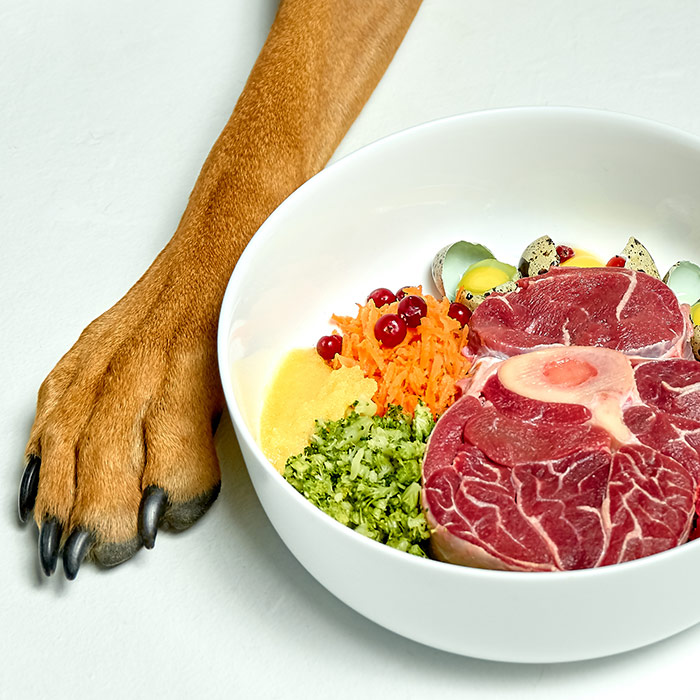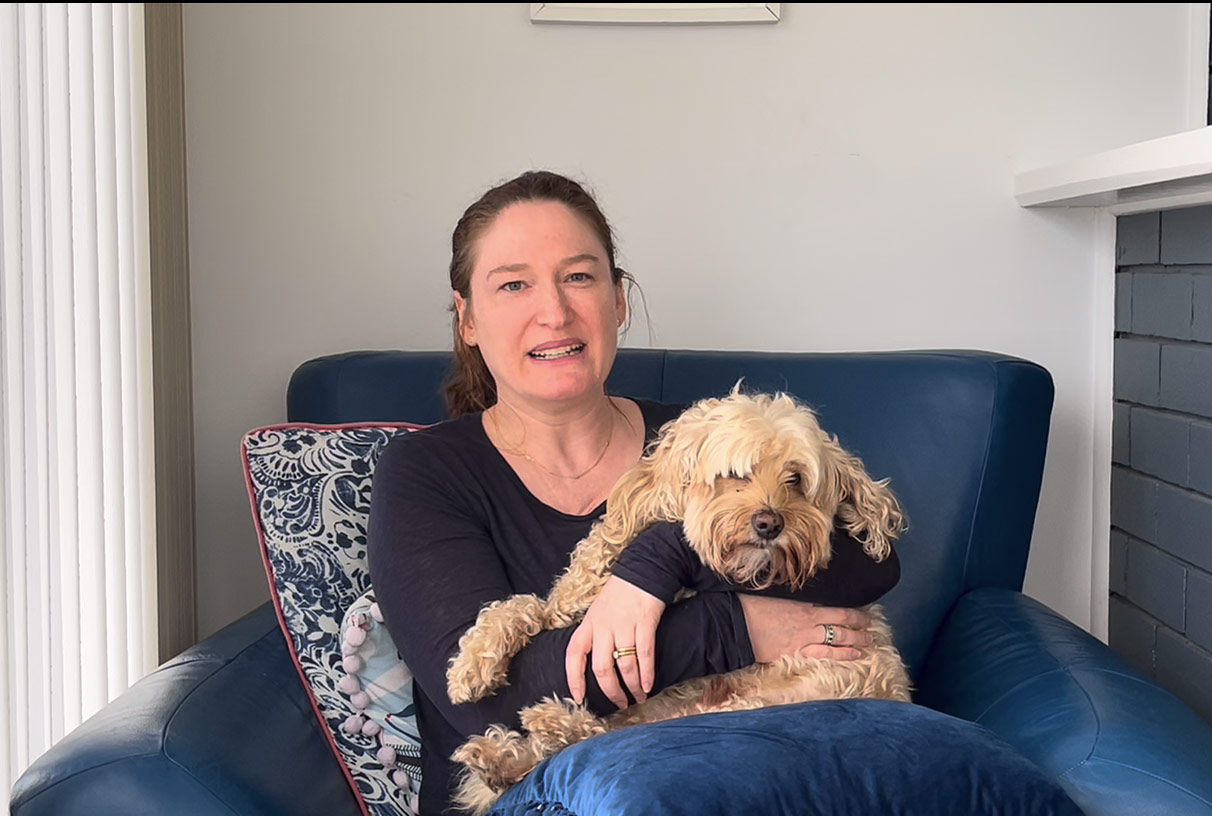The Top 10 Small Dogs in Australia
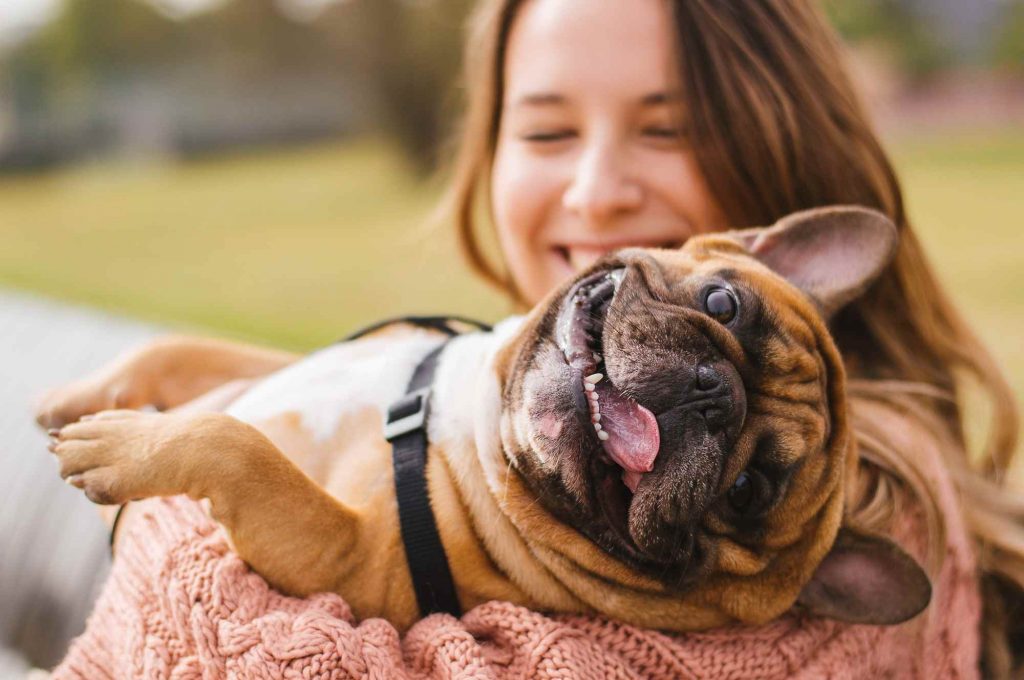
Small dogs are everywhere… whether running rings around the big dogs at dog parks or trotting alongside their owners along suburban streets, being chauffeured around the shops in a pram or carried about in a handbag or backpack, small dogs definitely appear to be some of our favourite companions.
 There are lots of fantastic small dog breeds available, and most of them make wonderful companion animals. Perfect for those who haven’t quite got the space needed for a Great Dane or Border Collie, these pint sized pets are not just cuddly fluff balls or lap accessories – in fact, many of them have just as much personality and energy as their much bigger cousins. Plus they’ve got that cuteness factor!
There are lots of fantastic small dog breeds available, and most of them make wonderful companion animals. Perfect for those who haven’t quite got the space needed for a Great Dane or Border Collie, these pint sized pets are not just cuddly fluff balls or lap accessories – in fact, many of them have just as much personality and energy as their much bigger cousins. Plus they’ve got that cuteness factor!
There are a number of small breeds that have found permanent places in the hearts of Australians for generations, as well as some newcomers that have jumped into our hearts more recently. These breeds – and the even tinier miniature, toy and teacup varieties – generally weigh under 10 kg. Here are the most popular small dog breeds in Australia at present, along with a brief description. Is your pint-sized best friend on the list?
1. Cavoodle

The Cavoodle (a.k.a Cavapoo), a cross breed of the Cavalier King Charles Spaniel and the Miniature Poodle, is the most popular small to medium designer breed in Australia. Cavoodles usually have soft, wavy or curly coats which tend to shed a little since Poodles do not shed but Cavaliers do. Cavoodle puppies come in a variety of colours, and as it is not a standardised breed, no two puppies look the same.
The Cavoodle temperament combines the best traits from the Cavalier and the Poodle to create an intelligent, affectionate, playful and eager-to-please family companion. They are highly trainable, obedient and are very easy to teach. They thrive on the company of their family and other household pets, and do not like to be left alone.
As a mix between Cavalier King Charles Spaniel and Poodle parents, you can expect Cavoodles to be small to medium, depending on the size of the Poodle parent. Generally, they stand at 30 to 35 cm tall and weigh between 5 and 12 kg, although many are smaller or larger. Their lifespan is around 10 to 14 years.
2. French Bulldog

The French Bulldog has a small to medium stature and a lean and muscular build, with a large head and short legs. They have proven a popular choice for families and people living in apartments as they don’t require a lot of space to keep them occupied and aren’t prone to barking without good reason.
The French Bulldog is popular for its unique appearance and clownish, good-spirited behaviour. A playful, friendly and reliable dog with a good reputation for playing nice with kids, it is an energetic and loyal companion. Although the breed requires little dedicated exercise beyond a daily walk, consistent human contact is required and indoor living is a must.
A healthy French Bulldog will weigh between 10 to 13 kg and will generally live for between 12 to 16 years.
3. Miniature Dachshund
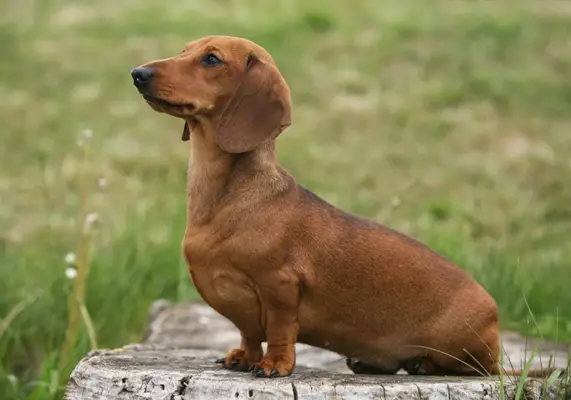
The Miniature Dachshund, affectionately known as Doxie, has a long muzzle, almond-shaped eyes, and three coat varieties – shorthaired, wirehaired and longhaired. They have an independent nature, which can make them more challenging to train.
With their loveable temperament and bright personalities, Miniature Dachshunds make great family pets and loyal companions. They love nothing more than curling up under a blanket with their owners and they enjoy the company of other dogs, especially other Dachshunds. They also make great watchdogs.
Be aware – their long back can be injured if not handled with care, so young children should always be supervised. They don’t require a huge amount of exercise, so are a great choice for the elderly and less mobile. They do need to be kept on the lead during walks because they have a strong hunting drive and will take off if they catch a scent.
The Miniature Dachshund weighs about 4.9 kilos at the age of 12 months and they stand at about 13 to 18 cm. Dachshund’s have an average lifespan of 12 to 15 years.
4. Maltese

One of the oldest toy breeds, the Maltese a fine-boned dog with long white flowing hair, dark eyes and a dark nose. Maltese are very intelligent – they have been used for therapy dogs and have also competed in agility and obedience events. They can, however, be stubborn about their house training.
The Maltese is a spirited, lively little dog with a great personality that is suited to all type of owners and that thrives in its owner’s company. Considered to be the ultimate lap dog, the Maltese is not really suited to households with very young children because of its fragility. Maltese are very suitable for apartment dwellers as they don’t really require a backyard or a whole lot of outside exercise, but they do love to play games. Maltese do tend to be prolific barkers especially if they are left alone for extended period.
Maltese weigh about 3 or 4 kgs. Males stand 21 cm to 25 cms and females stand 20 cm to 23 cm. The lifespan of the Maltese is 15 years or more.
Find out more about pet insurance for dogs.
5. Cavalier King Charles Spaniel
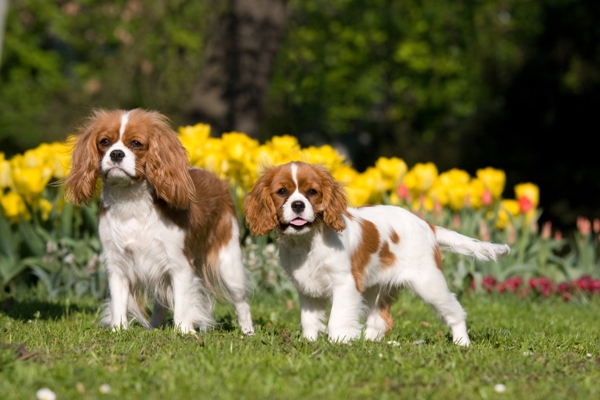
The Cavalier King Charles Spaniel has long floppy ears, a short, stubby nose, a moderately long coat, and a well-feathered chest and tail. Officially classified as a toy breed, the Cavalier King Charles Spaniel was originally developed by crossing King Charles Spaniels with Pugs.
Cavalier King Charles Spaniels are very affectionate, energetic and eager little dogs. They are very gentle, kind and good-natured, love human contact and need a good deal of it to thrive. They have a great reputation with children, and are generally very tolerant of other pets in the home, even cats. They are keen to please and are therefore quite easy to train.
They are extremely happy indoors, even smaller dwellings like apartments or townhouses, but a small backyard is best. Their high energy requires that they be walked at least once a day, but keeping them on a leash is essential. Because of their hunting background, the Cavalier King Charles Spaniel is prone to chasing cars, bikes and other smaller animals.
The average Cavalier King Charles Spaniel measures between 30 to 33cm and a healthy dog will weigh between 5 to 8 kg. The life expectancy for a Cavalier King Charles Spaniel is about 9 to 14 years.
6. Pug

An ancient breed, the Pug is a small dog known for its wrinkly face and curly tail. Pugs have square, compact bodies with deep chests and well-formed muscles. Their coat is short and glossy, and most often is fawn-coloured. Their lower teeth often rest further forward than the upper, and as a result most Pugs have under bites.
 Pugs are well suited to many types of owners, including elderly people and families with young children. They are very loyal, affectionate and loving towards their owners and often follow them wherever they go. Though strong-willed, Pugs are very rarely aggressive and are very fond of children and get along well with other pets.
Pugs are well suited to many types of owners, including elderly people and families with young children. They are very loyal, affectionate and loving towards their owners and often follow them wherever they go. Though strong-willed, Pugs are very rarely aggressive and are very fond of children and get along well with other pets.
They are fine for apartments and small dwellings and will cope without a yard. Although playful and lively, they are a relatively inactive breed, they can be prone to overeating and so should be taken on daily walks. They do not cope well in hot or cold weather and therefore should be kept indoors at a comfortable temperature.
Healthy male Pugs weigh around 6 to 9 kg and stand at 30 to 36 cm tall, while females are usually 6 to 8 kg and between 25 and 30 cm tall. The life expectancy of the Pug is 12 to 15 years.
7. Miniature and Toy Poodle

The Miniature Poodle and Toy Poodle are smaller versions of the Standard Poodle, a water retriever hunting dog. Poodles of all sizes are known for their thick, tightly curled and hypoallergenic coats that came in a variety of colours and require professional grooming and clipping to look their best.
Regardless of their beautiful and delicate appearance, the Miniature and Toy Poodles have an alert, eager and energetic nature. They are very intelligent, loyal, joyful and playful, with a reputation for getting into mischief if they’re not stimulated with games and exercise – at least one or two daily walks – and they can develop ongoing behavioural problems if not given enough human attention.
While generally good-natured, the Toy and Miniature types aren’t recommended for small children, who can inadvertently hurt them. Toy Poodles don’t have as much patience for kids as the standard type; they will nip and growl if they feel fear and confusion, and younger children may unknowingly provoke them.
Miniature and Toy Poodles generally measure between 24 and 28cm and should weigh between 3 to 4 kg. The average Toy Poodle will live for between 12 to 15 years.
8. Miniature Schnauzer

The Miniature Schnauzer is a popular small dog with a huge personality and loads of energy. This dog is very popular all around the world and often makes 20 top most popular dog lists.
The Miniature Schnauzer has a strong personality and can be a bit stubborn, so can be a bit of a challenge to train. But, they are also highly intelligent and inquisitive so a commitment to training will lead to positive results. They requires a fair amount of exercise to ensure that they don’t become bored and destructive. While they love an active lifestyle, Miniature Schnauzers are also happy to curl up on the lounge for a nap with their owners.
The male Miniature Schnauzer weighs between 5 kg and 8 kg and the female weights between 4.5 kg and 6.8 kg. The male Miniature Schnauzer stands at about 36 cm and the female stands at about 33 cm. Miniature Schnauzers live to an average age of 13-15 years.
9. Moodle

The Moodle, aka Maltipoo, is a toy hybrid breed dog that comes from mixing Maltese and Miniature Poodle. The Moodle is often called ‘the cutest dog ever’ because of their size and overall cuteness.
Their low energy levels cause them to take the relaxed approach with life and you can often find Moodles lying in the laps of their owners or going for short walks. They also love playing with their owners. They are very intelligent, easy to train and are a great choice for first time dog owners. Moodles develop a stronger relationship with teenagers and adults who know how to handle their delicate nature rather than small children.
Moodle’s usually only grow to about 20 cm and can weigh anywhere between 2 kg and 9 kg. Their average life expectancy is 12 to 15 years.
Find out more about pet insurance for dogs.
10. Chihuahua

The Chihuahua is the smallest breed of dog and is named after its place of origin in Chihuahua, Mexico. The breed became exceptionally popular in the USA 1930s and 40s and since the 60s they have consistently ranked among the AKC’s most popular dog breeds. They are also very intelligent – in terms of body to brain ratio, Chihuahuas have the biggest brain of any dog breed.
Chihuahuas have big personalities and are often fiercely devoted to one of its owners – which can occasionally result in them become over-protective, snappy or reserved around strangers. This aspect of their temperament makes them a poor option for families with young children. On the other hand, as they are a low-maintenance breed, they can make great companions for the elderly and families with older children.
Despite their small stature and the temptation to carry them around, Chihuahuas have a lot of energy. They should be taken on a daily walk and allowed to roam in an enclosed indoor or outdoor space. If their exercise needs are not satisfied, the dog may become anxious, neurotic, and develop a number of other behavioural problems.
The average Chihuahua (both male and female) stands at about 15 – 23 cm tall and weighs just 1.7 – 3 kg. Like other small dog breeds, the Chihuahua has a rather long lifespan – up to 18 years.
Children and small dogs:
- It is important to teach any young child who comes into contact with a small sized breed to be gentle and that the dog is not a toy.
- To ensure a well-socialised small dog, early socialisation while a puppy and consistent on-going training are highly recommended.
If you’re interested in looking at some other small dog breeds, visit our complete list of small dog breeds available in Australia.
FAQ
What are some popular small dog breeds in Australia?
In Australia, some popular small dog breeds include the Australian Terrier, Cavalier King Charles Spaniel, and French Bulldog. The Australian Terrier, native to Australia, is known for its robust health and energetic personality, making it a favourite among families. The Cavalier King Charles Spaniel is cherished for its gentle and affectionate nature, while the French Bulldog is sought after for its playful disposition and minimal exercise needs, and is well suited to urban living.
Which small dog breeds are best for Australian climates?
The best small dog breeds for Australia’s diverse climates are those that can adapt to both warm and cooler weather. Breeds like the Miniature Schnauzer and Chihuahua are quite adaptable. Miniature Schnauzers have a wiry coat that protects them from the heat and cold, while Chihuahuas, despite their small size, are hardy and can comfortably handle warmer climates provided they have ample shade and water. These breeds are perfect for Australian residents looking for a pet that can thrive in various weather conditions.
Are there any low-shedding small dog breeds in Australia?
Australia has several low-shedding small dog breeds that are ideal for those concerned about allergies or who prefer minimal grooming responsibilities. The Maltese, Miniature Poodle, and Bichon Frise are excellent examples of low-shedding breeds. Poodles, available in toy and miniature sizes, are particularly popular for their intelligence and hypoallergenic coats. Bichon Frises are also a favoured choice due to their fluffy, low-shed coat and friendly temperament.
What small dog breeds are best for Australian families with children?
For families with children, the best small dog breeds in Australia include the Beagle, Cocker Spaniel, and Pug. Beagles are known for their friendly nature and resilience, making them great companions for children. Cocker Spaniels are also well-suited to families thanks to their gentle demeanour and patience, while Pugs are beloved for their sociable and affectionate personality, which makes them excellent playmates for kids.
How do I choose the right small dog breed for an apartment living in Australia?
Choosing the right small dog breed for apartment living in Australia involves considering a breed’s activity level, noise tendencies, and space needs. Breeds like the Dachshund, Boston Terrier, and Yorkshire Terrier are typically good for apartments. Dachshunds are relatively low-energy and can adapt to smaller spaces, Boston Terriers are known for their friendly nature and moderate activity levels, and Yorkshire Terriers are compact and generally quiet, which makes them ideal for close-quarter living.
What are the exercise requirements for small dog breeds in Australia?
Small dog breeds in Australia vary in exercise requirements based on their energy level and health. Generally, breeds like Jack Russell Terriers require a lot of exercise due to their high energy, whereas breeds like the Shih Tzu require moderate daily activity to maintain their health and happiness. Regardless of the breed, regular exercise helps maintain a healthy weight and supports mental well-being, crucial for a well-rounded lifestyle.
Can small dog breeds in Australia be easily trained?
Many small dog breeds in Australia are known for their trainability, especially the Miniature Poodle, Havanese, and Papillon. Poodles excel in obedience and agility due to their high intelligence, making them one of the easiest breeds to train. Havanese also respond well to training with their eager-to-please attitude. Papillons, despite their small size, are very smart and can learn various tricks and commands quickly. Proper training from an early age is crucial for ensuring these dogs behave well both in the home and out in public.
We recommend that you take out pet insurance as soon as you bring your dog home, so that you will be covered for any potential issues or medical conditions from the start. You can insure your pet from 8 weeks of age, and Bow Wow Meow offers 2 months free in the first year for puppies, which makes it even more affordable.










